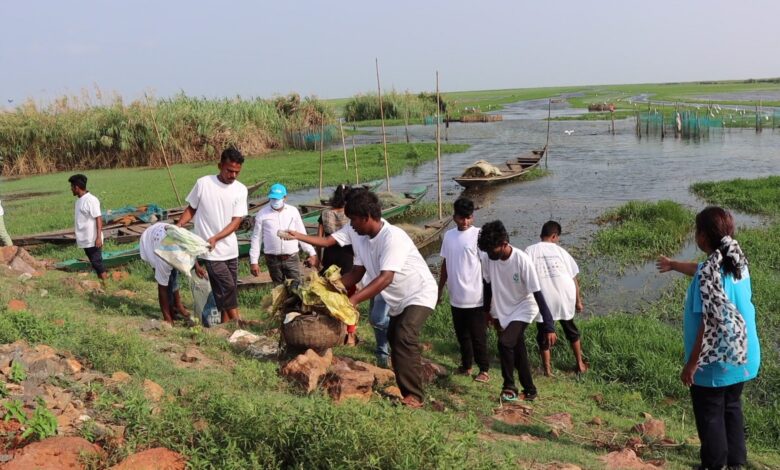
Local youth helping in cleanliness drives around the Mangalajodi wetland. Photo Credit: UNICEF
EnvironmentSociety IndiaSecond-Largest Lake Goes from an Illegal Hunting Ground… to a Tourist Attraction
Restoring Chilika lake, India’s second-largest, was the first step in saving the Mangalajodi wetland, and undertaking tourism-related initiatives was the obvious next to strengthening ecosystems, biodiversity, and the livelihoods of local communities.
“It is easier to work with the youth as they are more active and efficient in learning quickly. We have around 30 to 40 members, mostly youth […]” states Shivaji Nayak, Secretary at Wild Orissa, an NGO that offers programs to the young population.
Restored in 1991 with the establishment of the Chilika Development Authority, the Mangalajodi wetland spreads over 10 square kilometers and has been classified as an Important Bird Area. Once the population went from illegal hunting to tourism-related livelihoods, the annual income grew 2.5 times between 1995 and 2014. Communities have learned to be more resilient – climate changes heavily impact the wetland’s health and the unpredictability of livelihoods – through initiatives launched by Wild Orissa and UNICEF’s Youth4Water. Wild Orissa proposes programs to the youth, including training to identify birds, approach guests, and promote eco-tourism in the area. And Youth4Water mobilizes local youth through activities meant to strengthen ecosystem resilience, like weekly cleanliness drives and training sessions on visual cues to diagnose water body issues. The Youth4Water campaign also provides entrepreneurial support to the youth who have their own projects.



